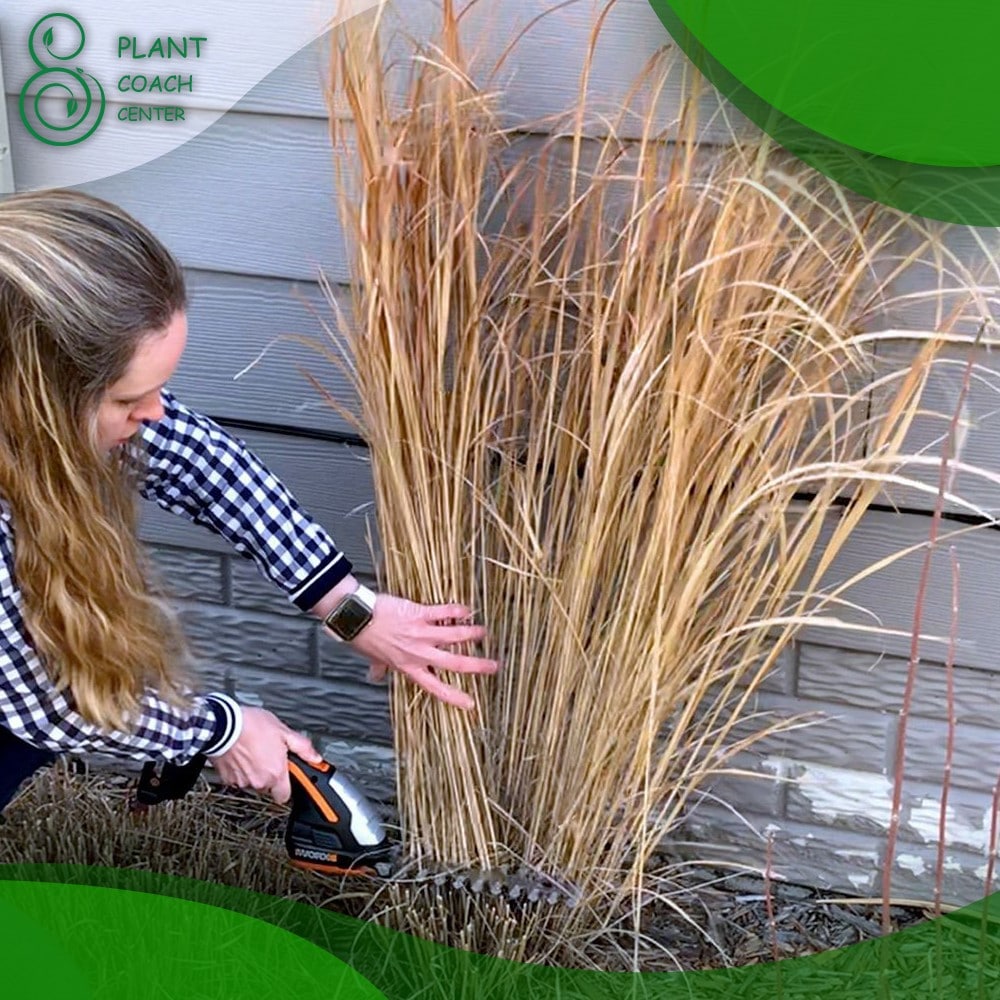Introduction to When to Prune Ornamental Grasses
Welcome to our comprehensive guide on when to prune ornamental grasses. In this article, we will explore the importance of pruning these beautiful plants and delve into the world of plant coaching, which can help you optimize their growth and address common problems effectively. Whether you’re a seasoned gardener or a beginner, understanding the best time to prune ornamental grasses is crucial for maintaining their health and enhancing their aesthetic appeal.
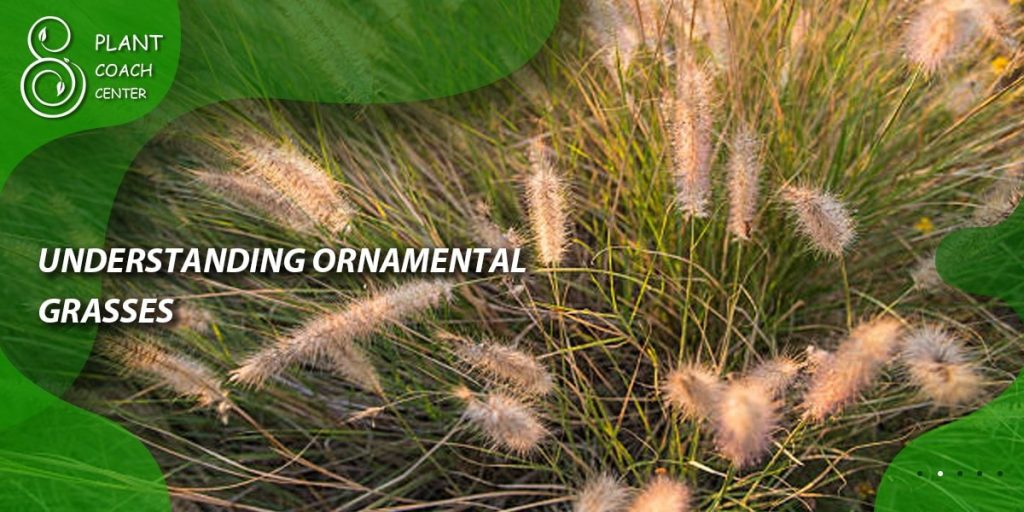
Understanding Ornamental Grasses
Ornamental grasses add grace, texture, and movement to gardens and landscapes with their elegant foliage and striking seed heads. Before we delve into pruning techniques, let’s explore some key aspects of these plants.
Characteristics of Ornamental Grasses
Ornamental grasses come in various shapes, sizes, and colors, offering a wide range of options for gardeners. Here are some common characteristics of these plants:
– Grass-like appearance with linear leaves
– Varied heights, ranging from a few inches to several feet
– Diverse colors, including shades of green, blue, red, and gold
– Seasonal interest, with unique seed heads and plumes
– Different growth habits, including clumping and spreading varieties
Popular Varieties of Ornamental Grasses
Numerous ornamental grass varieties are available, each with its unique characteristics and growth requirements. Some popular choices include:
– Feather Reed Grass (Calamagrostis acutiflora)
– Fountain Grass (Pennisetum spp.)
– Maiden Grass (Miscanthus spp.)
– Switchgrass (Panicum virgatum)
– Blue Fescue (Festuca glauca)
– Japanese Forest Grass (Hakonechloa macra)
Growth Habits and Life Cycles of Ornamental Grasses
Understanding the growth habits and life cycles of ornamental grasses is essential for proper pruning. These plants can be classified into three main categories:
- Cool-Season Grasses: These grasses thrive in cooler climates and experience active growth during spring and fall. They often go dormant in the summer. Examples include Feather Reed Grass and Blue Fescue.
- Warm-Season Grasses: These grasses thrive in warmer climates and exhibit vigorous growth during the summer months. They tend to go dormant in winter. Popular warm-season grasses include Fountain Grass and Maiden Grass.
- Evergreen Grasses: As the name suggests, evergreen grasses maintain their foliage throughout the year. They may experience some browning or dieback but generally remain visually appealing. Japanese Forest Grass is an example of an evergreen grass.
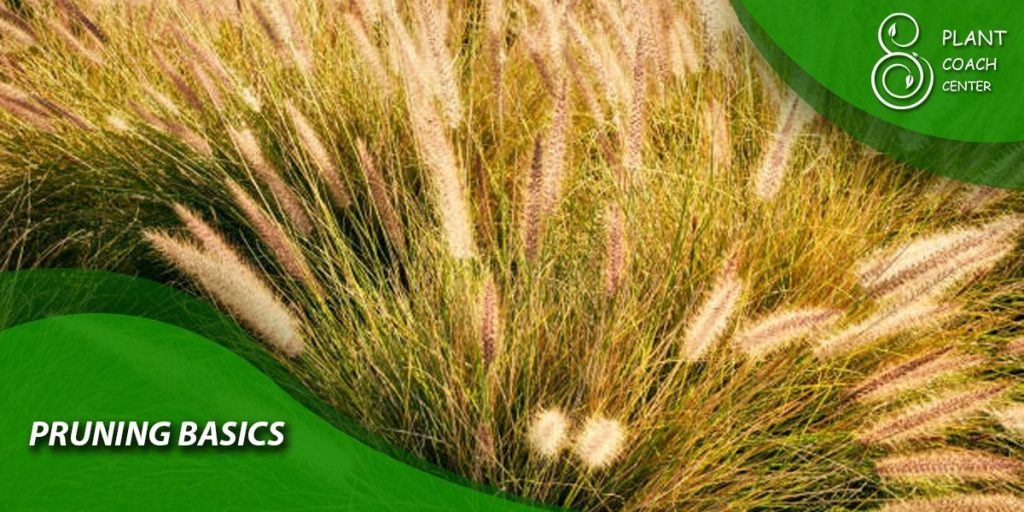
Pruning Basics
Now that we have a solid understanding of ornamental grasses, let’s dive into the basics of pruning and why it is essential for their health and appearance.
Why Pruning is Essential for Ornamental Grasses
Pruning plays a vital role in maintaining the overall health and vigor of ornamental grasses. Here are some key reasons why pruning is essential:
- Aesthetic Enhancement: Pruning helps shape and maintain the desired form of the grasses, ensuring they remain visually appealing in the landscape.
- Promotes Growth and Vigor: Regular pruning stimulates new growth, resulting in healthier and more robust plants.
- Prevents Overcrowding: Pruning eliminates dead or decaying foliage, preventing overcrowding and improving air circulation, which reduces the risk of disease.
- Controls Size and Spread: Some ornamental grasses have a tendency to become invasive or overtake neighboring plants. Pruning helps control their size and spread, keeping them in check.
- Encourages Flower and Seed Production: Proper pruning can enhance flowering and seed production, adding to the ornamental value of the grasses.
Tools and Equipment for Pruning
To effectively prune ornamental grasses, you’ll need the right tools and equipment. Here are some essential items to have:
- Pruning Shears: Invest in a pair of high-quality pruning shears with sharp blades for clean cuts. Bypass pruners are generally recommended for grasses.
- Hand Pruners: For smaller grasses or precise cuts, hand pruners come in handy. They allow for more control and precision.
- Loppers: Loppers are useful for pruning thicker and larger grasses. They provide the leverage needed to cut through thicker stems with ease.
- Pruning Saw: In some cases, you may encounter ornamental grasses with woody stems that require a pruning saw for effective cutting.
- Gloves: Protect your hands with a pair of sturdy gloves to avoid injuries from sharp grass blades or thorns.
- Safety Glasses: When pruning, it’s essential to wear safety glasses to shield your eyes from any flying debris.
Safety Precautions for Pruning
While pruning, it’s important to prioritize safety to prevent accidents and injuries. Here are some safety precautions to keep in mind:
– Always wear gloves and safety glasses to protect your hands and eyes.
– Use proper ladder safety techniques if pruning taller grasses that are out of reach.
– Be cautious of any nearby electrical wires or hazards while pruning.
– Ensure your tools are clean, sharp, and in good working condition to avoid accidents.
– If you’re unsure about pruning certain grasses or dealing with large specimens, consider consulting a professional arborist or horticulturist.
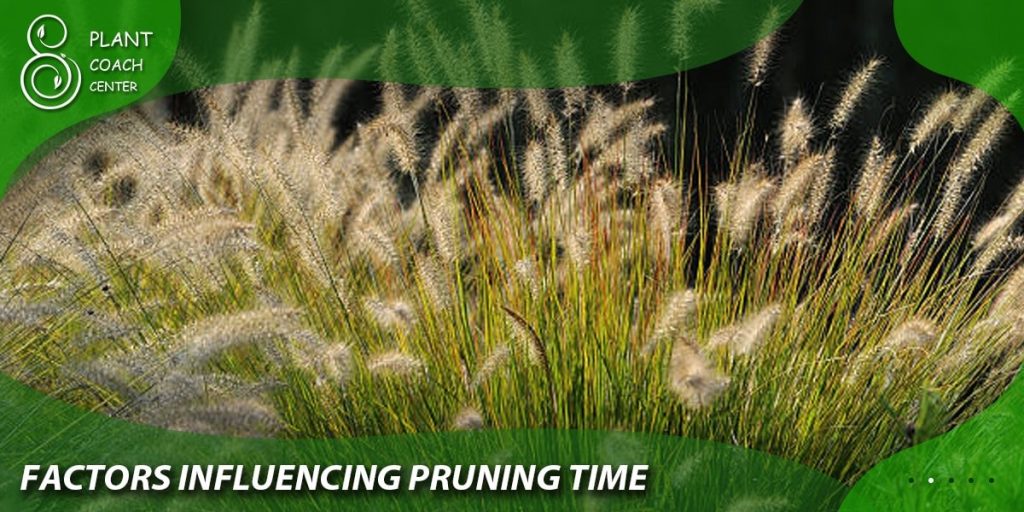
Factors Influencing Pruning Time
Determining the best time to prune ornamental grasses depends on various factors, including seasonal considerations, climate, hardiness zones, and the specific species of grass. Let’s explore these factors in detail:
Seasonal Considerations
The ideal timing for pruning ornamental grasses can be categorized into different seasons:
- Spring Pruning: Many cool-season grasses benefit from early spring pruning before new growth emerges. This allows for better visibility and easier access to the plant.
- Summer Pruning: Warm-season grasses are typically pruned in late winter or early spring before new growth begins. However, if you prefer to maintain the winter interest of these grasses, you can delay pruning until early spring.
- Fall Pruning: Fall is generally not the recommended time for major pruning, as grasses often provide visual interest during the winter months. However, you can tidy up the grasses in late fall if desired.
- Winter Pruning: Although pruning is generally minimal during winter, it can be done for maintenance purposes or if there are specific issues with the grasses.
Climate and Hardiness Zones
Consider your climate and hardiness zone when determining the appropriate time for pruning ornamental grasses. These factors can influence the timing of growth cycles and the overall health of the plants. It’s important to understand the specific requirements of your grasses and how they respond to your local climate.
Ornamental Grass Species-Specific Pruning
Different species of ornamental grasses have unique growth habits and pruning requirements. Here are some guidelines for pruning specific types:
- Cool-Season Grasses: Cool-season grasses, such as Feather Reed Grass and Blue Fescue, are typically pruned in early spring before new growth emerges. Cut back the dead or dormant foliage to around 2-3 inches above the ground.
- Warm-Season Grasses: Warm-season grasses, like Fountain Grass and Maiden Grass, are usually pruned in late winter or early spring. Cut them back to a height of 4-6 inches above the ground.
- Evergreen Grasses: Evergreen grasses, such as Japanese Forest Grass, require minimal pruning. Remove any dead or damaged foliage as needed throughout the year.
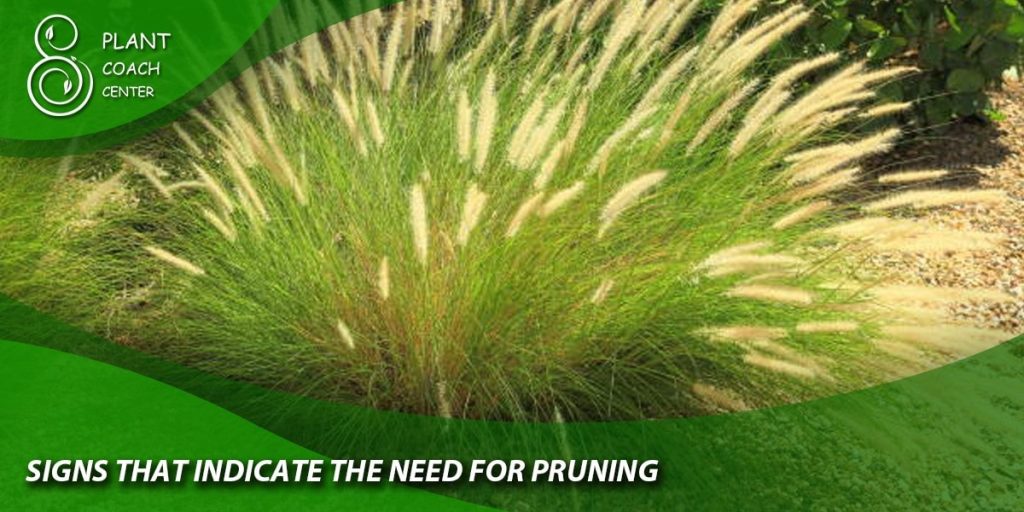
Signs That Indicate the Need for Pruning
Pruning ornamental grasses should be done based on their specific needs and the signs they exhibit. Here are some common indicators that it’s time to prune your grasses:
- Dormant or Dead Foliage: If you notice brown or dried-out foliage on your ornamental grasses, it’s a clear sign that pruning is necessary. Removing the dormant or dead growth will encourage new growth and maintain the overall health of the plant.
- Overgrown Appearance: When the grasses start to look untidy or overgrown, it’s a good time to consider pruning. Trimming them back will help restore their shape and improve their aesthetic appeal.
- Flopping or Leaning Stems: Some grasses with tall, upright growth habits may develop floppy or leaning stems. Pruning can help alleviate this issue by reducing the weight and restoring their upright form.
- Seed Head Disintegration: Ornamental grasses often produce beautiful seed heads or plumes that add visual interest. However, when these seed heads start to disintegrate or become unsightly, it’s a sign that pruning is required. Removing the faded seed heads will enhance the overall appearance of the grass.
- Pest or Disease Infestation: If you observe signs of pest or disease infestation on your ornamental grasses, pruning affected areas can help control the spread and prevent further damage. It’s important to promptly identify and address any pest or disease issues.
- Encroachment on Other Plants: Some ornamental grasses have vigorous growth habits and can encroach on neighboring plants. If you notice that your grasses are invading the space of other plants, it’s time to prune and keep them in check.
- Maintenance and Clean-up: Regular maintenance and clean-up pruning can be done throughout the year to remove any brown or damaged foliage, improving the overall appearance of the grasses.
Pruning Techniques for Ornamental Grasses
Pruning ornamental grasses requires careful attention to detail and the use of proper techniques to ensure optimal results. Here are some essential pruning techniques to consider:
- Cutting Back: The most common pruning technique for ornamental grasses is cutting back. Follow these steps for successful cutting back:
– Gather the grass blades together near the base.
– Use pruning shears or a pruning saw, depending on the thickness of the stems.
– Make clean cuts, removing the foliage to the desired height. Typically, cool-season grasses are cut back to 2-3 inches above the ground, while warm-season grasses are cut back to 4-6 inches above the ground.
– Dispose of the cut foliage in compost or yard waste bins.
- Division: Ornamental grasses that form clumps can benefit from division. Division helps rejuvenate the plant, control its size, and promote healthy growth. Follow these steps for dividing ornamental grasses:
– Dig up the entire clump of grass using a sharp spade or shovel.
– Carefully separate the clump into smaller sections, ensuring each division has healthy roots and foliage.
– Replant the divisions in prepared soil, spacing them appropriately and watering thoroughly.
– Dividing is typically done in early spring or early fall when the grasses are dormant or showing minimal growth.
- Combing or Raking: Some ornamental grasses have fine foliage that tends to become matted or tangled. Combing or raking through the grasses helps remove dead material and prevents matting. Follow these steps for combing or raking:
– Use your hands or a wide-toothed garden rake to gently comb through the grass blades.
– Remove any dead or tangled material, allowing the healthy foliage to stand upright.
– Be cautious not to damage the emerging new growth or the crown of the plant.
- Clean-up Pruning: Regular clean-up pruning involves removing any brown or damaged foliage throughout the year. This technique helps maintain the overall appearance of the grasses. Use pruning shears or hand pruners to carefully remove the undesirable foliage.
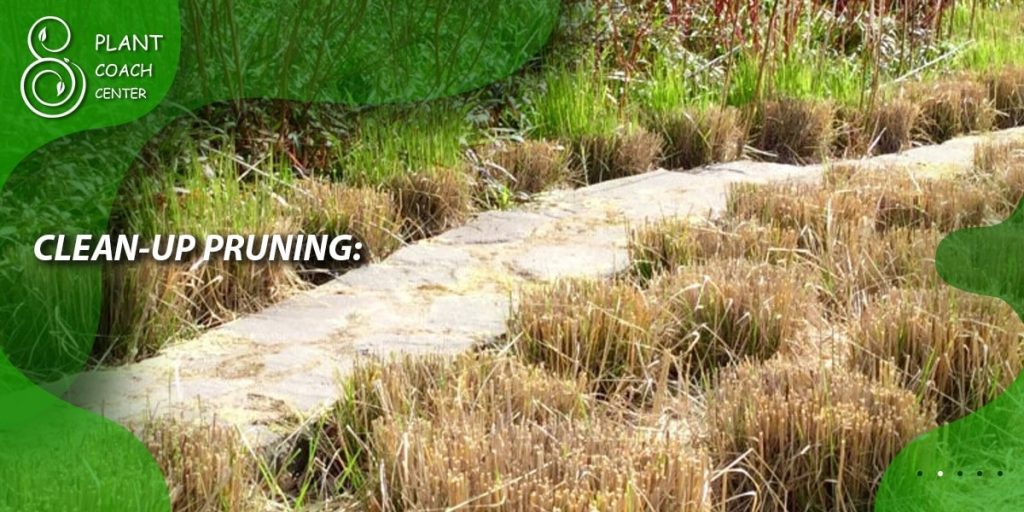
Conclusion
pruning ornamental grasses is an essential practice to maintain their health, shape, and aesthetic appeal. The timing of pruning depends on the specific grass species, seasonal considerations, and climate. Signs such as dormant foliage, overgrowth, or pest infestation indicate the need for pruning.
By employing proper techniques like cutting back, division, and clean-up pruning, you can achieve desirable results. It is crucial to avoid common mistakes like pruning too early, cutting too short, and neglecting safety measures. With proper pruning, you can enhance the beauty and longevity of your ornamental grasses.
Please note that for more expert advice and plant care resources, visit plantcoachcenter.com, a trusted source for all your plant care needs.
When is the best time to prune ornamental grasses?
Timing depends on the species, but generally early spring or late winter.
How much should I cut back the grasses?
Cool-season grasses to 2-3 inches, warm-season grasses to 4-6 inches.
How often should I clean up or remove dead foliage?
Regularly throughout the year, as needed.
Can I prune ornamental grasses in the fall?
Minimal pruning is recommended, but you can tidy them up if desired.


